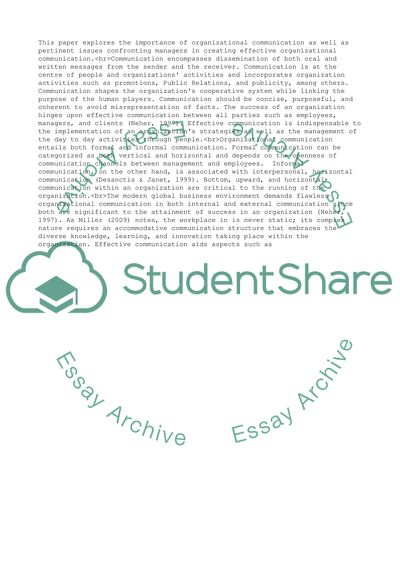Cite this document
(Why organizational communication is important and the issues involved Essay, n.d.)
Why organizational communication is important and the issues involved Essay. https://studentshare.org/management/1773958-why-organizational-communication-is-important-and-the-issues-involved-for-managers-in-creating-effective-organizational-communication
Why organizational communication is important and the issues involved Essay. https://studentshare.org/management/1773958-why-organizational-communication-is-important-and-the-issues-involved-for-managers-in-creating-effective-organizational-communication
(Why Organizational Communication Is Important and the Issues Involved Essay)
Why Organizational Communication Is Important and the Issues Involved Essay. https://studentshare.org/management/1773958-why-organizational-communication-is-important-and-the-issues-involved-for-managers-in-creating-effective-organizational-communication.
Why Organizational Communication Is Important and the Issues Involved Essay. https://studentshare.org/management/1773958-why-organizational-communication-is-important-and-the-issues-involved-for-managers-in-creating-effective-organizational-communication.
“Why Organizational Communication Is Important and the Issues Involved Essay”. https://studentshare.org/management/1773958-why-organizational-communication-is-important-and-the-issues-involved-for-managers-in-creating-effective-organizational-communication.


